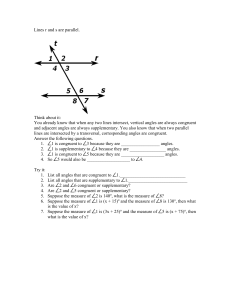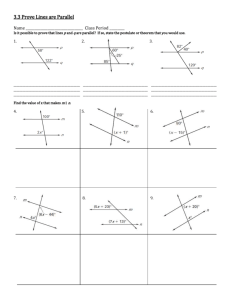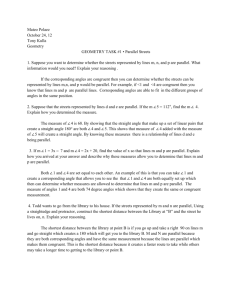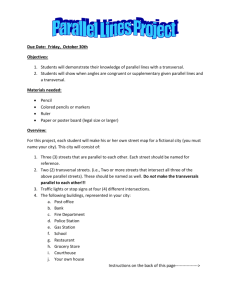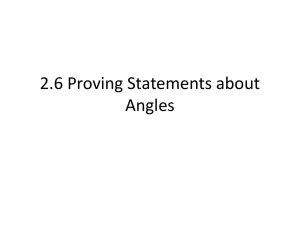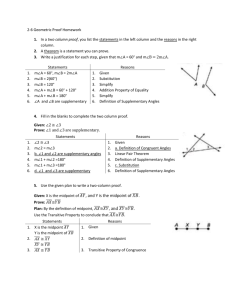2.6 Geometric Proof
advertisement
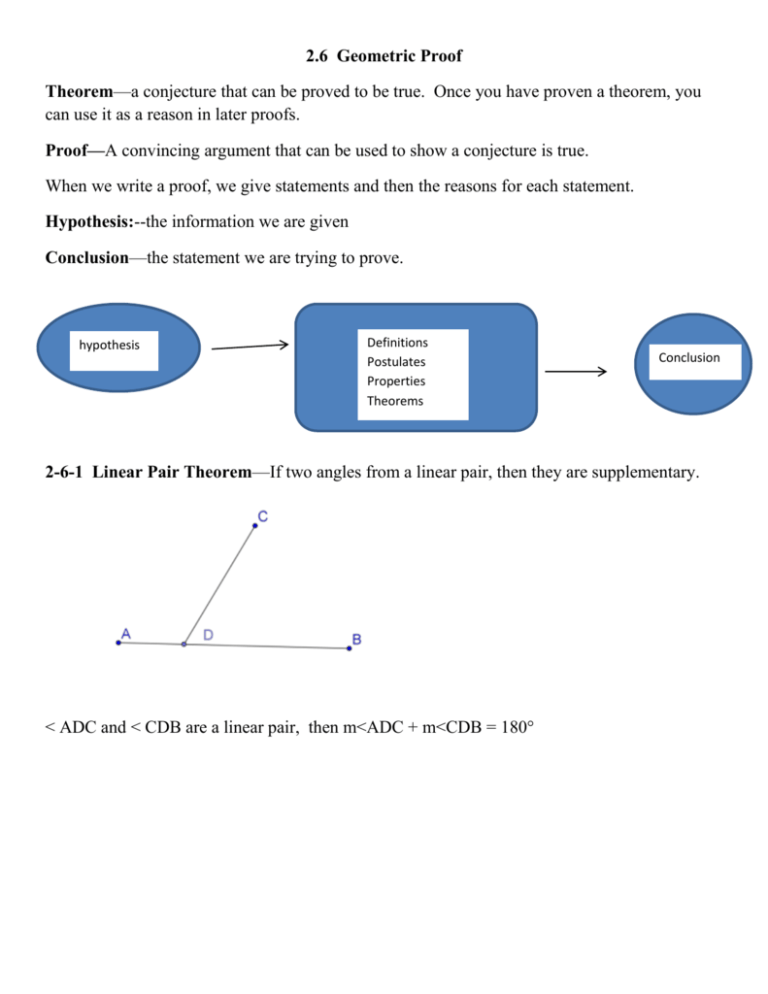
2.6 Geometric Proof Theorem—a conjecture that can be proved to be true. Once you have proven a theorem, you can use it as a reason in later proofs. Proof—A convincing argument that can be used to show a conjecture is true. When we write a proof, we give statements and then the reasons for each statement. Hypothesis:--the information we are given Conclusion—the statement we are trying to prove. hypothesis Definitions Postulates Properties Theorems Conclusion 2-6-1 Linear Pair Theorem—If two angles from a linear pair, then they are supplementary. < ADC and < CDB are a linear pair, then m<ADC + m<CDB = 180° 2-6-2 Congruent Supplements Theorem—If two angles are supplementary to the same angle, (or to two congruent angles), then the two angles are congruent. If < ABC and < GHI are supplementary and < DEF and < GHI are supplementary, then < ABC < DEF. 2-6-3 Right Angle Congruence Statement—All right angles are congruent 2-6-4 Congruent Complements Theorem-- If two angles are complementary to the same angle (or two congruent angles, then the two angles are congruent If < ABC and < GHI are complementary and < DEF and < GHI are complementary, then <ABC < DEF. 2-7-1 Common Segment Theorem—Given collinear points A, B, C, D arranged as shown, if AB CD, then AC BD 2-7-2 Vertical Angles Theorem-Vertical angles are congruent <1 and < 3 are vertical angles < 2 and < 4 are vertical angles <1 < 3, < 2 < 4 2-7-2 If two congruent angles are supplementary, then each angle is a right angles ( <’s sup rt <’s) If < 1 and < 2 are congruent and < 1 and < 2 are supplementary, then <1 and < 2 are right angles.)


